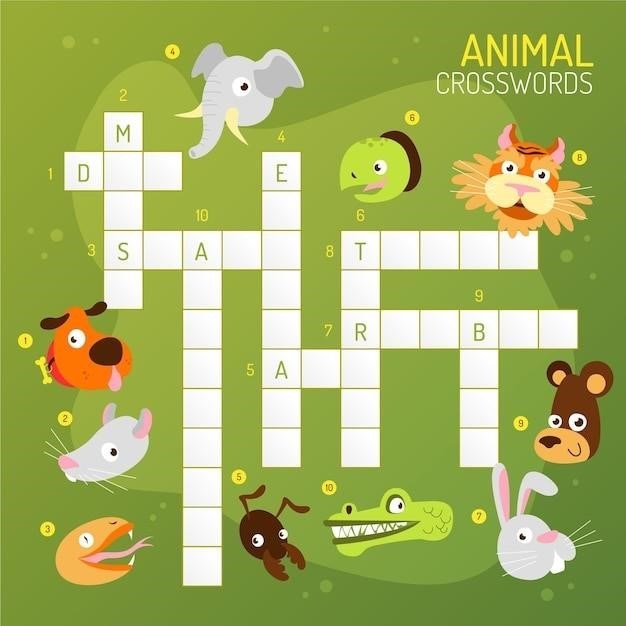
wisc-v scoring manual pdf
WISC-V Scoring Manual PDF⁚ A Comprehensive Guide
The WISC-V Scoring Manual PDF is an indispensable resource for professionals administering and interpreting the Wechsler Intelligence Scale for Children – Fifth Edition (WISC-V)․ This comprehensive guide provides detailed information on test administration, scoring, and interpretation, enabling clinicians to accurately assess cognitive abilities in children aged 6 to 16 years․
Overview of the WISC-V Scoring Manual
The WISC-V Scoring Manual is a crucial document for anyone administering and interpreting the Wechsler Intelligence Scale for Children – Fifth Edition (WISC-V)․ This manual serves as a comprehensive guide for understanding the test’s structure, scoring procedures, and interpretation of results․ It provides a detailed explanation of the test’s psychometric properties, including its reliability, validity, and standardization․ The manual also outlines the test’s theoretical framework, which emphasizes the assessment of cognitive abilities across various domains․
The WISC-V Scoring Manual is organized in a user-friendly manner, providing clear instructions and explanations․ It includes detailed information on each subtest, including the administration procedures, scoring criteria, and interpretation of results․ The manual also provides guidance on calculating composite scores, such as Full-Scale IQ (FSIQ) and index scores, which reflect different cognitive abilities․
The WISC-V Scoring Manual is essential for ensuring accurate and reliable assessment of cognitive abilities in children․ It provides a framework for understanding the test’s design, administration, scoring, and interpretation, enabling clinicians to make informed judgments about a child’s cognitive strengths and weaknesses․
Key Features of the WISC-V Manual
The WISC-V Scoring Manual is meticulously designed to provide comprehensive guidance for administering and interpreting the WISC-V․ It is characterized by several key features that enhance its utility for professionals⁚
- Clear and Concise Language⁚ The manual utilizes straightforward language, ensuring easy comprehension for a wide range of users, including psychologists, educators, and other professionals involved in child assessment․
- Detailed Subtest Information⁚ Each subtest is thoroughly explained, including administration procedures, scoring criteria, and interpretation guidelines․ This detailed information facilitates accurate scoring and understanding of individual subtest performance․
- Comprehensive Scoring Procedures⁚ The manual provides step-by-step instructions for scoring individual subtests, calculating composite scores, and interpreting the results․ These procedures ensure consistency and accuracy in the scoring process․
- Normative Data and Tables⁚ The manual includes extensive normative data and tables for interpreting scores․ This information allows for comparisons of a child’s performance to a representative sample of their age peers․
- Interpretation Guidelines⁚ The manual offers detailed guidance on interpreting scores, including explanations of different score ranges, their significance, and potential implications for the child’s cognitive abilities․
These key features contribute to the WISC-V Scoring Manual’s effectiveness in supporting professionals in conducting comprehensive assessments of cognitive abilities in children․
Understanding WISC-V Scores and Interpretations
The WISC-V Scoring Manual provides a framework for understanding the various scores obtained from the assessment, enabling professionals to effectively interpret the results and draw meaningful conclusions․ The manual emphasizes the importance of considering both individual subtest scores and composite scores, recognizing that they offer distinct insights into cognitive functioning․

The WISC-V employs a standard score system, with a mean of 100 and a standard deviation of 15, allowing for comparisons across different age groups․ Scores within the average range, generally considered to be between 90 and 110, indicate typical cognitive functioning for the child’s age․ Scores above 110 suggest above-average abilities, while scores below 90 indicate below-average abilities․
The manual guides professionals in interpreting the significance of scores, considering factors such as the child’s developmental history, educational background, and cultural influences․ It emphasizes the need for a holistic interpretation, taking into account the overall pattern of strengths and weaknesses across different cognitive domains; The WISC-V Scoring Manual serves as a vital tool for professionals to understand the nuances of cognitive performance and make informed decisions about interventions or support services․
Administration and Scoring Procedures
The WISC-V Scoring Manual provides detailed instructions for administering and scoring the assessment, ensuring standardized procedures for accurate and reliable results․ The manual outlines specific guidelines for each subtest, including the presentation of test materials, response prompts, and time limits․ It emphasizes the importance of following these procedures meticulously to maintain the integrity of the assessment․
The manual includes detailed scoring criteria for each subtest, providing clear definitions of correct and incorrect responses․ It outlines specific rules for scoring different types of responses, including partial credit and alternative scoring methods․ The manual also offers guidance on handling unusual responses and situations that may arise during testing․
The WISC-V Scoring Manual provides a comprehensive set of instructions for recording and calculating scores․ It outlines the steps for converting raw scores to scaled scores and index scores, ensuring consistency in data analysis․ The manual also includes tables and charts for reference, facilitating efficient scoring and interpretation of results․ The detailed administration and scoring procedures outlined in the manual ensure that the WISC-V assessment is conducted and scored consistently, contributing to the reliability and validity of the results․
Interpreting WISC-V Index Scores
The WISC-V Scoring Manual provides comprehensive guidance on interpreting the five primary index scores⁚ Verbal Comprehension (VC), Visual-Spatial Reasoning (VS), Fluid Reasoning (FR), Working Memory (WM), and Processing Speed (PS)․ These index scores represent a child’s cognitive strengths and weaknesses across different domains․
The manual explains how to analyze the relative strengths and weaknesses among the index scores․ It highlights the significance of examining the variability between index scores, as significant differences can indicate specific cognitive profiles․ For example, a strong VC score combined with a lower FR score might suggest a child who excels in verbal skills but struggles with abstract reasoning․
The WISC-V Scoring Manual emphasizes the importance of considering the individual child’s background and experiences when interpreting index scores․ It cautions against drawing conclusions based solely on scores, emphasizing the need to integrate the assessment findings with other relevant information, such as academic records, behavioral observations, and family history․ The manual provides a framework for interpreting index scores within a broader context, facilitating a comprehensive understanding of a child’s cognitive abilities and potential learning needs;
Subtest Scores and Their Significance
The WISC-V Scoring Manual delves into the individual subtests that comprise the WISC-V, providing detailed information on their content, administration, and scoring․ Each subtest measures specific cognitive abilities, contributing to the overall index scores․ Understanding the individual subtest scores is crucial for a comprehensive assessment of a child’s cognitive profile․
For instance, the “Similarities” subtest assesses verbal reasoning and abstract thinking, while the “Block Design” subtest measures visual-spatial reasoning and problem-solving skills․ The manual provides specific guidelines for interpreting each subtest score, considering its relationship to the broader cognitive profile and potential implications for learning and development․
The WISC-V Scoring Manual emphasizes the importance of examining the pattern of subtest scores․ A significant discrepancy between subtest scores, even within the same index, can reveal specific strengths and weaknesses that might not be apparent from the index scores alone․ For example, a child might perform well on the “Vocabulary” subtest but struggle on the “Digit Span” subtest, suggesting a strength in verbal knowledge but a weakness in working memory․ This detailed analysis of subtest scores provides a more nuanced understanding of a child’s cognitive strengths and challenges, guiding interventions and educational strategies․

Digital Administration and Scoring on Q-interactive
The WISC-V Scoring Manual addresses the increasing prevalence of digital assessment platforms and provides a dedicated section on the digital administration and scoring of the WISC-V using Q-interactive, a platform developed by Pearson․ This section guides users through the process of administering and scoring the WISC-V in a digital environment, ensuring that the integrity and reliability of the assessment are maintained․
The manual outlines the technical requirements for using Q-interactive, including compatible devices, internet connection, and software updates․ It also details the steps involved in creating a user profile, accessing the digital test materials, and administering the subtests on the platform․ The manual provides specific instructions for navigating the digital interface, administering each subtest, and recording responses accurately․
The WISC-V Scoring Manual highlights the advantages of digital administration, including ease of use, reduced administration time, and automated scoring․ It also addresses potential challenges and provides solutions for technical difficulties that might arise during the digital administration process․ The manual emphasizes the importance of maintaining a standardized and secure environment for digital administration to ensure the validity and reliability of the assessment․
Accessing the WISC-V Scoring Manual
The WISC-V Scoring Manual is typically accessed through a combination of online resources and physical copies․ For professionals who have purchased the WISC-V assessment kit, the manual will be included as a physical component․ This physical copy provides comprehensive information on test administration, scoring, and interpretation, and is often accompanied by supplementary materials such as record forms and scoring templates․
Additionally, online resources, such as the publisher’s website or dedicated platforms for psychological assessments, often offer digital versions of the WISC-V Scoring Manual․ These digital versions provide access to updated information, including errata and supplemental materials․ Furthermore, online platforms may offer features such as interactive scoring tools, online training modules, and access to a wider range of resources related to the WISC-V assessment․
It is important to note that access to the WISC-V Scoring Manual may be restricted to licensed professionals with appropriate credentials․ The publisher may require users to register and provide relevant information before granting access to the manual․ This ensures that only qualified individuals with the necessary training and expertise can utilize the WISC-V assessment and its accompanying resources․
Resources for Further Learning
Beyond the WISC-V Scoring Manual itself, a wealth of resources exist for professionals seeking to deepen their understanding of the assessment and its applications․ These resources can provide valuable insights into the theoretical underpinnings of the WISC-V, practical tips for administration and interpretation, and real-world examples of how the assessment is used in various settings․
One valuable resource is the WISC-V Technical and Interpretive Manual․ This manual offers a more in-depth exploration of the psychometric properties of the WISC-V, providing detailed information on reliability, validity, and norming procedures․ It also includes insights into the development of the assessment, its theoretical framework, and the rationale behind its design․
Additionally, various books and articles have been published on the WISC-V and broader topics in intelligence testing․ These resources can provide valuable perspectives from leading experts in the field, offering insights into the latest research, best practices, and emerging trends in the assessment and interpretation of cognitive abilities․
Online platforms dedicated to psychology and educational assessment often offer a range of resources, including articles, webinars, and training modules specifically focused on the WISC-V․ These resources can provide practical guidance for professionals seeking to enhance their skills in administering, scoring, and interpreting the WISC-V․






